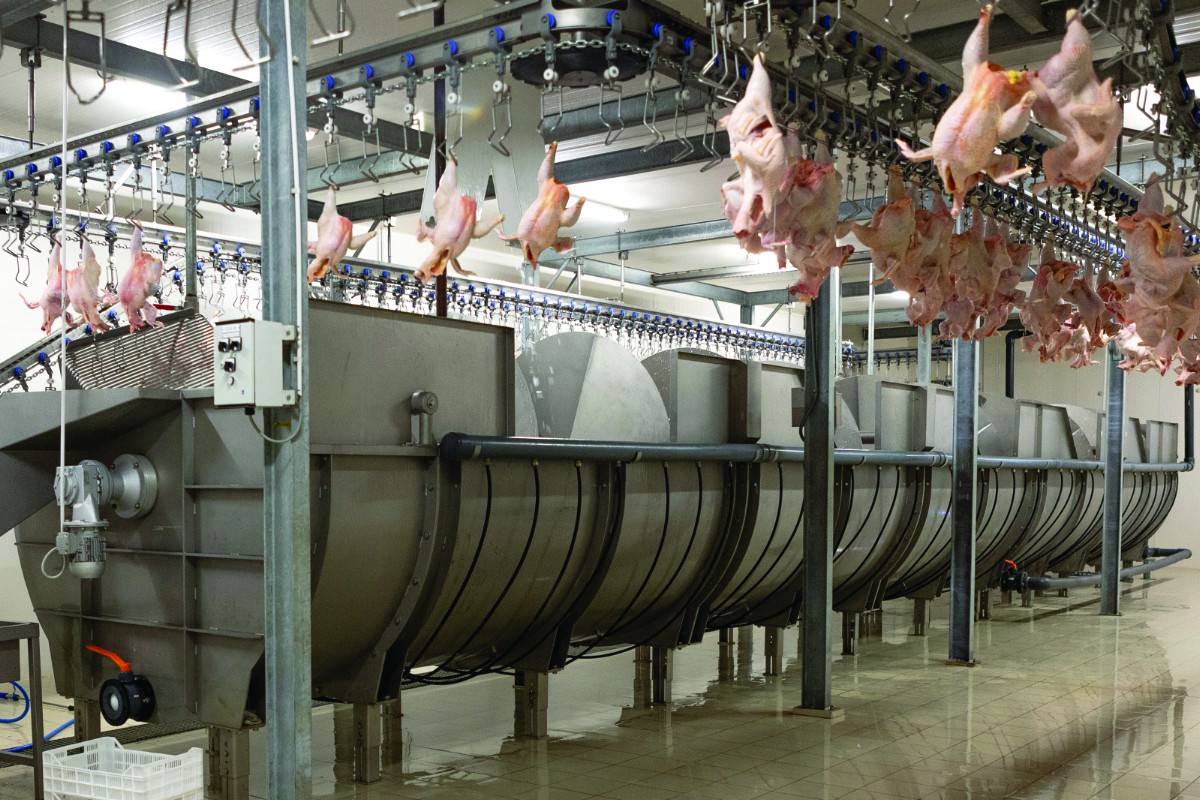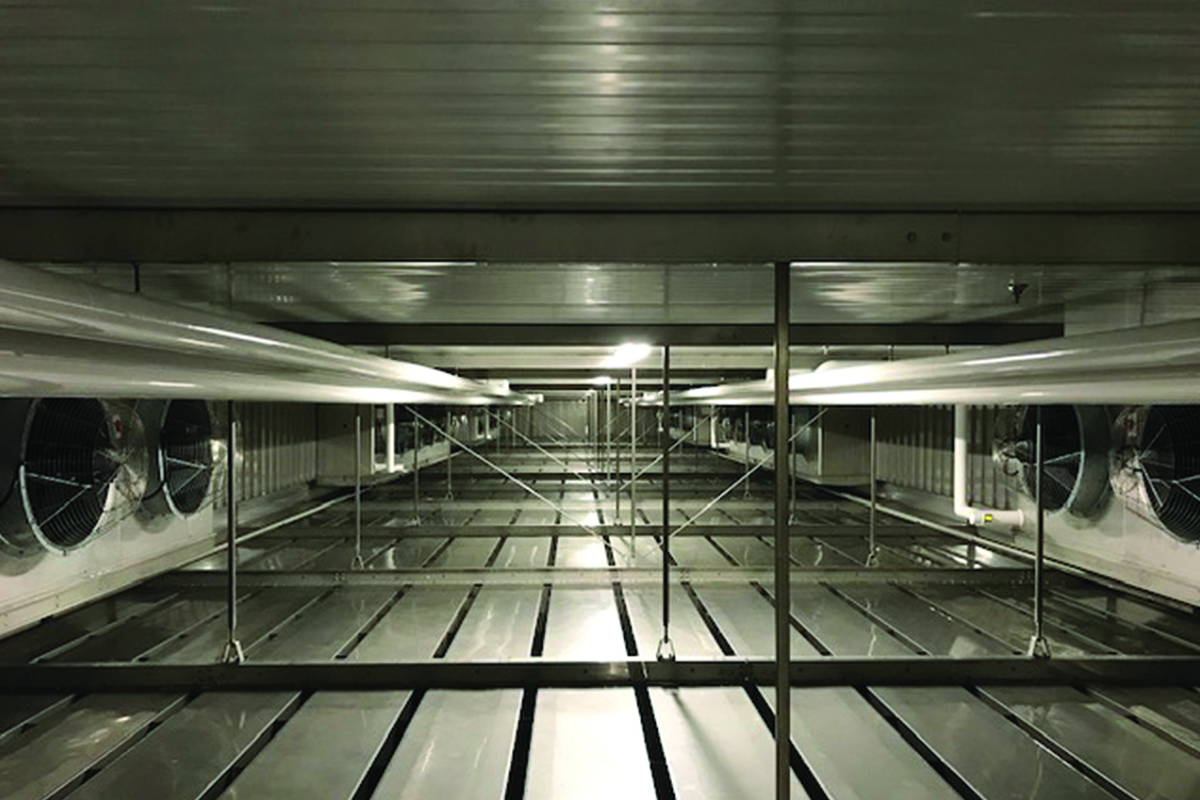Poultry chilling concepts from 10 years ago perfectly fit their purpose. However, times have changed: Products became heavier, different breeds and organic chicken appeared, line speeds increased, and customer demands evolved.
This is according to Roy Driessen, marketing manager, poultry, for Marel Poultry, headquartered in Iceland, with US operations in Lenexa, Kansas.
“Today’s chilling systems put into practice the latest technological insights, which take into account the evolving world of poultry processing,” he says.
For years, global poultry producers have been moving from water-chilled, deep-frozen chicken to air-chilled, fresh chicken, Driessen says.
“Even in the US, air-chilled poultry is becoming more popular,” he adds. “This trend will certainly continue in coming years.”
Superior shelf life
The Baader Clean Air Chill uses innovative air-chilling technology to ensure high product quality with a superior shelf life, says Oliver Hahn, CEO of Baader, Kansas City, Kansas.
“Clean, cold airflow is directed through the cavity opening of each bird through a duct work system, obtaining a fast cooling from the inside,” he says. “At the same time, the cold air is distributed over the bird’s surface to prevent moisture loss.”
The Baader Clean Air Chill automatically transfers birds from the evisceration line to the air-chill line, as well as air-chill to the distribution line, eliminating the need for manual re-hangers.
Additionally, the Baader Clean Air Chill introduces another step between the clean air-chill room and the maturation room.
“After the first two zones of the clean air-chill room, dry birds enter the cold-temp room (with temperatures from -6°F to -8°F) for about 14 minutes,” Hahn says. “The extremely low temperature kills the bacteria Campylobacter and Pseudomonas, which improves shelf life of the product. This process does not change the bird’s appearance or add ice buildup.”
More benefits of the Baader Clean Air Chill include:
- Its single-layer design in the air chilling system prevents cross-contamination caused by dripping onto lower levels;
- Easy cleaning of the chilling room, as dripping on structural beams is avoided –
only the floor needs daily washing; - Fast air chilling without freezing the extremities by applying chilled airflow both through the cavity opening and on the surface of the bird;
- Exposing birds quickly to below-freezing temperatures creates an insulation around the bird, making it impossible to lower the core temperature; and
- Reducing weight loss by fast sealing of the skin surface.
In addition, Baader offers a water chilling system with stainless-steel water chillers. The spiral design and air-agitation system ensures an even chilling of birds.

Full system processing
Tom Rozendaal, product manager for Netherlands-based Foodmate B.V., says although chilling lines are not the company’s core business, it offers them as complementary lines to deliver a full system from live bird arrival to a deboned piece of meat.
Foodmate offers both air chilling and water chilling technologies for poultry carcass chilling.
“We also offer a combination of both, meaning a water spay on the birds of an air chill line,” Rozendaal says. “This helps to cool the bird faster and reduces weight losses.”
Foodmate’s immersion water chillers offer industry standard, large stainless-steel augers to transport chickens for a specific time through a bath of cold water.
For its air chill line, the company offers a cost-efficient shackle that is placed on a chain on a tight pitch to reduce the footprint of the area.
“We work with local refrigeration companies to build the system in the factories, sized on the required capacity,” Rozendaal says.
Flexible flooring requirements
Chicago-based JBT Corp. offers its immersion FatCAT chilling systems for industries including poultry, ranging from 4 ft. to 12 ft. in diameter and adjustable in length to meet any processing floor requirements.
“The FatCAT chilling systems were the first in the market to be designed as space-saving systems,” says Darin Chancellor, product manager for JBT Corp. “We saw the future of poultry processing going up in birds per minute (bpm) as well as in weight, so our focus was to improve on our current chilling system and target a higher load capacity in a smaller footprint.”
The FatCAT chilling system leads the industry in pounds-per-foot loading, which in turn saves space for clients, he adds.
FatCAT chilling systems integrate a patented air header constructed of 8-in. square tubing that has removable caps at each end of the chiller to allow for sanitizing and inspection.
“With the customer in mind, we designed our FatCAT chilling system with an eye toward ease of cleaning and overall maintenance,” Chancellor says.
The FatCAT system also extends the recirculation tanks lower in the chiller body to allow earlier activation of the red water system to ensure that the water is as cold as possible before birds enter the chilling system.

Immersion chilling
Marel Poultry offers various technologies, chilling products to the correct core temperature without freezing small parts. For example, immersion chilling in water is still the norm in the US while in Europe, most chicken is air chilled, Driessen says.
Immersion chilling in a conventional counter-flow screw chiller has several advantages, he says.
“Water is a more efficient chilling medium than air,” Driessen says. “As dwell times are much shorter, immersion chill systems take up far less space, are cheaper to buy and, if a processing plant has its own borehole, cost less to run. Immersion-chilled product also picks up water, which means higher yield for the processor.”
If an end-product is to be sold deep-frozen, chilling carcasses in a counter-flow screw chiller can be a fast and efficient method, he says.
“Marel Poultry’s Counterflow Screw Chiller makes use of the counterflow principle, an efficient off-line way to chill products,” Driessen says. “The system is made up of 3-m. sections and can be supplied in 1- or 2-bath executions.”
If the end-product is to be sold fresh, many processors prefer air chilling, he says. However, if a producer requires higher line speeds, there might be a lack of space to accommodate the additional air-chilling equipment necessary for the increased line speed.
“For such situations, Marel Poultry offers a combination of immersion chilling and air chilling, while keeping the birds in the line,” Driessen says. “Products are transferred automatically to the in-line immersion chill system where they are completely immersed. This cools down products rapidly.”
Finally, it should be noted that Marel Poultry recently developed ChillingControl, the only solution in the market that dynamically and automatically adjusts tunnel settings to the load being handled.
“It’s a smart combination of existing technologies in chilling and Innova PDS product distribution software and it can be implemented in an existing chilling tunnel,” Driessen concludes.


